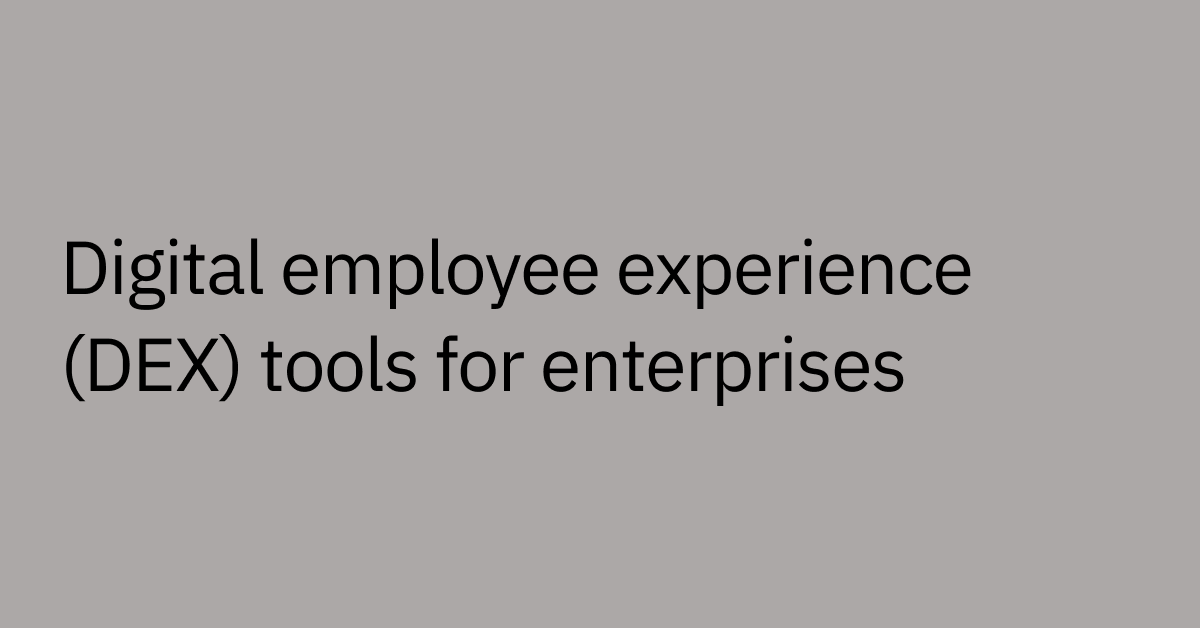Table of contents
Highlights
- Outsourced service desks offer temporary relief for overextended IT teams but often create long-term visibility and control gaps.
- Common pain points include loss of contextual insight, rigid SLAs, and limited scalability that slows innovation and responsiveness.
- AI automation resolves these challenges by handling Tier 0 and Tier 1 tasks—like password resets or provisioning—without vendor dependency.
- Automation is able to delivers compounding ROI as AI workflows reduce costs, accelerate resolution, and strengthen resilience.
- Moveworks helps minimize rigid outsourcing with adaptive AI that provides always-on support, real-time insights, and full operational control.
Outsourcing the service desk was once seen as a smart way to cut costs, improve service quality, and enhance scalability for help desk services. In fact, by 2022, 76% of businesses had already outsourced some or all of their IT support functions, spending about 8.1% of their budget on it.
If you’re weighing whether to stick with outsourcing or explore modern alternatives, this guide will help you break down the tradeoffs.
We’ll explore why companies outsource, the limitations of outsourcing, and why so many enterprises are now turning to AI automation for smarter, more flexible technical support.
Why businesses choose outsourced service desks
In 2024, the global help desk outsourcing market was valued at nearly $10 billion, with projections showing it could reach $18.3 billion by 2033. That growth reflects just how many enterprises rely on third-party service providers to meet the rising demand for IT help desk services.
For many IT leaders feeling stuck between under-resourced internal IT teams and rising support demand, outsourcing helps to maintain service delivery levels without adding headcount or overloading existing IT staff.
Some of the top reasons why businesses turn to IT managed services providers (MSPs) include:
- Relieve internal pressure: Outsourcing shifts the burden of routine IT support tasks, freeing your in-house team to focus on strategic priorities like cybersecurity or IT infrastructure upgrades.
- Ensure 24/7 availability: MSPs provide around-the-clock coverage, which is critical for global teams that are operating across time zones and need after-hours support.
- Scale without headcount: You can expand support team capacity without hiring and training new staff, avoiding recruitment and onboarding delays.
- Reduce training overhead: High agent turnover often slows operations as new help desk team members take time and budget to ramp up.
- Lower upfront costs: Paying an MSP for outsourced help desk services can seem more cost-effective over building an in-house team, especially for short-term business needs.
If your team is under strain, outsourcing feels like a smart way to keep things running. But short-term relief can come with long-term tradeoffs.
That’s why forward-thinking CIOs are now exploring how agentic AI automation can help scale support without sacrificing visibility or control, improving customer satisfaction and response times.
Limitations of outsourcing your service desk
Outsourcing support may seem like a scalable solution, but it can also create rigidity in operations, reduce adaptability, and disconnect IT from valuable metrics and customer satisfaction data.
While it provides short-term support for busy internal IT teams, it may conceal underlying inefficiencies in help desk operations, potentially complicating the identification of systemic technical issues and continuous improvement of the end-user experience. This could pose a strategic challenge.
What seems like a route to scalability could instead reduce visibility into service delivery performance, by making it more difficult to track important metrics such as resolution time or employee sentiment. These gaps can slow down digital transformation efforts, as IT departments work to align support services with evolving business needs.
Let’s break down where the disconnects show up most:
Loss of visibility and control
When you outsource your service desk, it becomes harder to see what’s really happening in your IT infrastructure. Without clear insight, you can’t easily spot recurring technical issues, understand which teams are most affected, or measure whether your support improves over time.
For example, if 20% of your tickets are password reset requests from a single region due to an SSO misconfiguration, an MSP might not flag this as a systemic issue. You can be left unaware of opportunities to optimize processes, improve issue resolution, or enhance employee satisfaction, which are critical to strategic IT decision-making.
Keeping control and visibility in-house can help you identify problems early and improve support continuously, reducing downtime and boosting efficiency.
Limited scalability
As your business evolves, MSPs often struggle to keep pace. Their rigid staffing models and service-level agreements (SLAs) lack the flexibility to scale up or down quickly in response to changing needs.
This inflexibility can lead to overpaying for unneeded resources or underpaying for insufficient tech support, locking you into contracts that don’t align with your dynamic environment.
In fact, a recent study found that 39% of MSPs face significant challenges when adapting to new cybersecurity technologies, highlighting how inflexible many service providers can be.
If you experience delays in adopting a new tool that your business needs, like advanced threat detection or cloud security solutions, it can leave your teams vulnerable.
Limited organizational context
When tickets are routed through an external service desk, context often gets lost. MSPs don’t have full access to all your business systems or applications, and they don’t understand your full business context and goals. They lack the full picture of how your business operates day to day, which limits their ability to resolve issues efficiently.
As a result, even common repetitive requests, like setting up multi-factor authentication (MFA), resetting a password, or provisioning a software license, can get stuck behind process bottlenecks and SLA timeframes.
These delays often happen because outsourced IT help desk support agents don’t understand how urgent a request is or how it impacts specific teams. And without full visibility into your systems, they may have to escalate tasks or rely on incomplete information to respond.
This creates friction for employees and slows down critical workflows, undermining the seamless support experience you aim to deliver.
What modern service desk automation looks like in practice
Outsourced support might handle your tickets, but AI can help to keep them from becoming tickets in the first place. That’s the power of automation in action.
With a service desk automation solution with self-service capabilities, you can empower employees to take care of everyday support needs, like resetting passwords, unlocking accounts, or getting a Zoom license, without waiting for help or submitting a ticket to IT. The system still is able to logs these requests for tracking, but with the right integrations, it has the ability to handle many L1 issues autonomously — before they ever reach a help desk team.
This level of automation makes immedidate self-service support a reality. Employees are able to get what they need on demand, 24/7, and your IT team can focus on strategic priorities.
AI is more than just service desk automation
AI solutions cover more than just L1 support. They offer a range of capabilities, including:
- Automated software provisioning: Grant access to tools like Zoom or Salesforce instantly, while enforcing access controls.
- Autonomous ticket handling: AI submits, routes, and categorizes tickets automatically, improving resolution time.
- Advanced enterprise search: Employees can find answers and resources across systems, from HR policies to IT guides, from one central interface.
- AI-driven ticket analysis: Uncover new opportunities to optimize support processes and get ahead of potential issues.
- Knowledge management: AI can maintain and even update knowledge bases to keep information current, accurate, and useful.
- Developer tools: Extend automation to departments like HR, engineering, sales, marketing, and finance with custom solutions.
With a comprehensive, integrated solution, employees can get help when and where it’s needed, while IT leaders gain the ability to create a more agile, connected, and responsive support model.
How automation can offer better ROI than outsourcing
Traditional MSPs often lock you into fixed contracts and rigid service tiers that rarely align with your real needs. You pay for people, not outcomes. But with automation, value scales with usage, delivering compounding returns. The more tasks you automate, the more gains you unlock, all without adding headcount or renegotiating terms.
Minimizing repetitive, low-value tasks like password resets, software access, and account unlocks can reduce the strain on your team and cut vendor overhead. It also gives your IT staff the breathing room to focus on innovation, not troubleshooting.
That shift in focus is where real ROI shows up. Just look at Databricks, which automated support workflows to deflect 73% of tickets, helping to save $1.5 million.
For enterprises looking to control costs without compromising service delivery, automation can deliver real, measurable returns.
Why AI improves support continuity and resilience
Cost and speed matter, but so does resilience. Continuity and consistency are just as critical as cost-efficiency. When systems, tools, or vendors change or unexpected disruptions happen, you still need to deliver uninterrupted support across teams, time zones, and tools.
That’s where AI can make a significant difference.
Unlike traditional MSPs, which often depend on human availability and vendor-specific SLAs, AI provides steady, around-the-clock support that isn’t impacted by location, time zone, or staffing constraints, helping you:
- Maintain support during vendor transitions without risking delays or ticket backlogs.
- Avoid service gaps when teams are offline or distributed across time zones.
- Respond instantly to common issues without relying on human intervention or shift coverage.
- Scale support seamlessly as new tools, systems, or workflows are introduced.
In short, AI helps future-proof your help desk operations so your business can stay focused, even when things shift.
How AI mitigates vendor risk and enables continuity
Vendor transitions, contract renegotiations, or unexpected disruptions can expose the fragility of outsourced models. Ticket backlogs and SLA breaches can spike when MSPs change or fail to adapt.
AI can help you minimize these pitfalls with continuous, uninterrupted support, handling password resets or software provisioning needs to keep employees productive. This resilience can help protect your operations and maintain employee trust in IT support.
How AI bridges global teams and systems
When your organization spans continents and employs multiple systems, like ServiceNow, Workday, and Azure, consistent support becomes a real challenge. Traditional support models are often segmented and tied to specific tools or time zones.
AI-powered support overcomes these barriers by providing centralized resolution across your entire tech environment — so an employee in APAC needing immediate Zoom access won’t be left waiting for the East Coast team to wake up.
Multilingual AI support tools have the ability to address the request instantly, via tools your teams already use, like Microsoft Teams or Slack, with no ticket, handoff, or delay. With AI at the helm, you can make support consistent and available 24/7, across offices, time zones, and tools.
This capability is especially vital as remote and hybrid work becomes the norm, with global digital jobs expected to reach over 90 million roles in 2030, a 25% increase from 73 million in 2024.
Why AI automation is the strategic path forward
MSPs are vital in scaling support, but over-reliance on them can hold you back. AI automation can offer a smarter alternative, enabling you to scale intelligently, reduce costs, and maintain visibility for high-quality support.
Unlike rigid vendor SLAs, AI has the ability to adapt to your needs in real time, helping to resolveing high-volume Tier 0 and Tier 1 tasks like password resets, account unlocks, or software provisioning, often without ticket creation or human intervention.
And when a ticket is needed, an automated ticketing system generates it instantly, routes it correctly, and enriches it with the right context, saving time and improving resolution accuracy.
Even better, AI flexes with your business. It enables you to scale support services when needed, surface real-time insights, and give IT teams back control of the experience.
Don’t take our word for it. Businesses across industries, from healthcare and finance to engineering and marketing, are already witnessing the impact of AI automation on business processes:
- CVS health reduced live agent chats by 50% in just 30 days
- Amadeus saw a 44% drop in calls to support teams within the first year
- Mercari reduced total ticket volume by 74%
- A global insurance leader deflects over 40,000 Level-1 support issues annually
These aren’t small wins. By reducing manual troubleshooting and giving employees immediate help, AI automation helps you scale IT support without sacrificing speed or control.
Future proof company growth, scale support with AI automation
Outsourcing was once a go-to strategy for reducing costs and meeting support demands, but it’s proving too rigid and unsustainable for today’s dynamic IT environments. The lack of visibility, flexibility, and contextual understanding has prompted IT leaders to seek more agile, intelligent support models.
The good news? You don’t need to rebuild your help desk support systems from scratch.
Moveworks helps enterprises skip the outsourcing and free up in-house IT teams by enabling on-demand self-service support. From provisioning software and resetting passwords to answering FAQs and surfacing resources, Moveworks gives you the ability to:
- Resolve issues in seconds: Instead of routing every minor issue to the help desk, Moveworks can resolve many of them directly in chat.
- Help reduce cost, improve predictablity: Moveworks can help you reduce total ticket volume and automate approvals, provisioning, and responses, helping to cut external vendor expenses.
- Give IT leaders visibility and control: Moveworks dashboards can surfaces key trends and behaviors, giving teams the actionable insights they need to improve support processes and keep systems running smoothly.
And this AI-powered approach doesn’t just benefit IT. It can also helps the entire business to address issues faster, minimize costly disruptions, and keep employees productive. Support is able to be delivered instantly in chat, while IT teams gain the visibility and control they need to continuously improve outcomes.
Empower your employees with self-serve tools and free up IT to focus on what matters most. Explore AI for IT with Moveworks.



